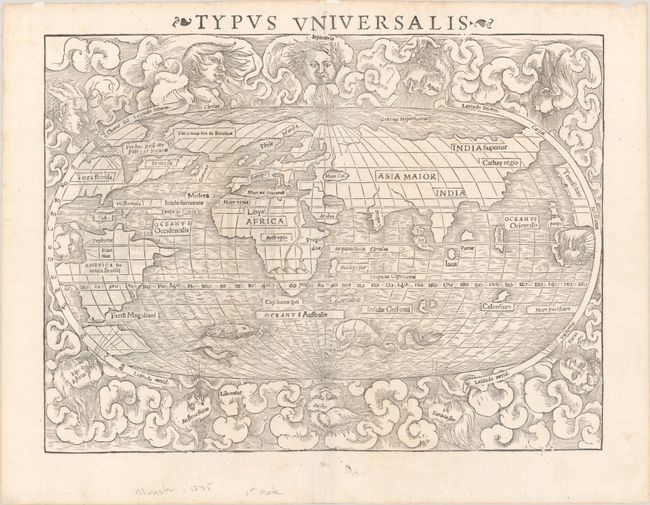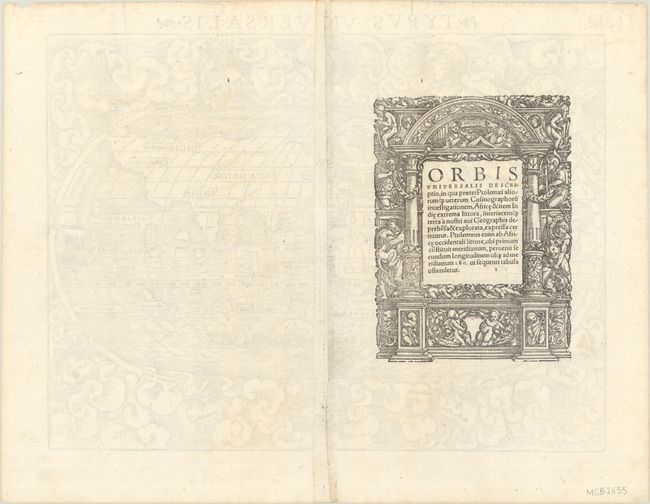Subject: World
Period: 1545 (published)
Publication: Geographia
Color: Black & White
Size:
13.6 x 10.3 inches
34.5 x 26.2 cm
Sebastian Munster (1489 - 1552) was one of the three most renowned cartographers of the sixteenth century, along with Mercator and Ortelius. Munster's Geographia and Cosmographia Universalis were two of the most widely read and influential books of the period. His editions of Ptolemy's Geographia, published between 1540 and 1552, were illustrated with 48 woodcut maps, the standard 27 Ptolemaic maps supplemented by 21 new maps. These new maps included a separate map of each of the known continents and marked the development of regional cartography in Central Europe. The antique geography was a prelude to Munster's major work, the Cosmographia, which was published in nearly 30 editions in six languages between 1544 and 1578 and then was revised and reissued by Sebastian Petri from 1588 to 1628. The Cosmographia was a geographical as well as historical and ethnographic description of the world. It contained the maps from the Geographia plus additional regional maps and city views with nearly 500 illustrations which made it one of the most popular pictorial encyclopedias of the sixteen century.
Rare first block of Munster's 'modern' map of the world presented on an oval projection surrounded by vigorous clouds and wind heads. North America is shown with the large cleft nearly separating the east coast from the continent, often referred to as the Sea of Verrazano, and a Northwest Passage stretches towards Asia with a note in Latin that it leads to the Moluccas. The lands in the Arctic are all joined together in one large promontory that includes Iceland and Scandinavia with the name of Terra Nova sive Bacalhos. Terra Florida and Francisca are the only place names on the eastern portion of North America, while the western coast is filled with the name of Temistitian. South America is shown in an ungainly shape labeled America seu Insula Braslii, with the Strait of Magellan noted below. In Africa, the Nile is prominently shown with its twin sources beginning in a range of southern mountains. The mythical islands of Grisonum and Calensuan are placed in the proximity of Australia. The Pacific Ocean is named for the first time on a printed map as the Mare Pacificum. Zipangri is noted for Japan, and the island of Taprobana (Sri Lanka) is named off the coast of India. A sailing ship and several fierce sea monsters occupy the oceans. Latin text on verso along with an elaborate woodcut illustration. This map was first published in the 1540 edition of Munster's Geographia, and then subsequently in the 1541, 1542, and 1545 editions, all in Latin. Munster also included this map in his Cosmographia, and this was the first of three blocks that appeared in the Cosmographia, appearing only in the German editions of 1544, 1545, 1546, and 1548 before it was replaced by a newly engraved block. As a result, this map is quite rare and not often found on the market.
References: Shirley #77.
Condition: A
A nice impression on a bright sheet with a short centerfold separation at top, a small chip at top right, and a tiny piece of hinge tape on recto at top left.



